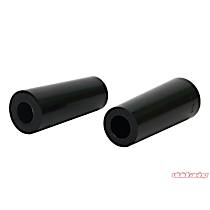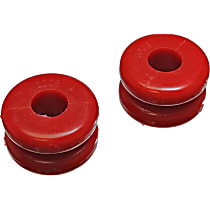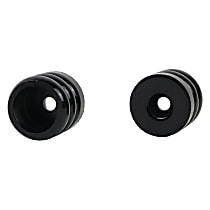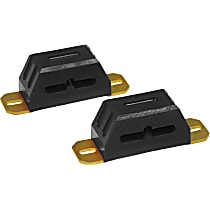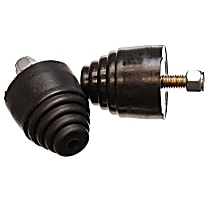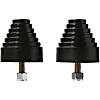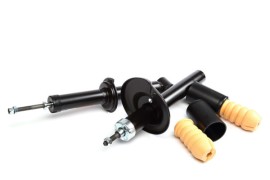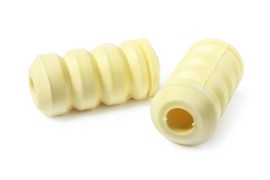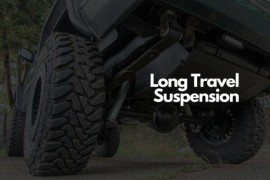{
"lazyNodes": false,
"abFitnotesFlag": false,
"abCrawlReviews": false,
"productOptionsCookie": false,
"orderDelayFlag": false,
"skipSessionCookie": false,
"covidMessage": false,
"fullTitleCookie": false,
"nrLoggerCookie": false,
"checkoutReviewCookie": false,
"productOptionSeqCookie": false,
"maintenanceFlag": false,
"bufferETACookie": false,
"multiShippingDiscountFlag": false,
"newFitmentFlag": false,
"surveyOptInFlag": false,
"crossSellFlag": false,
"skuMappingFlag": false,
"paySplitCookie": false,
"callDisableFlag": false,
"zipPaymentFlag": "u",
"hassleFreeReturn": false,
"lifetimeReplacement": false,
"cpn_off": false
}Jeep Cherokee Bump Stops
Shop Catalog
![]() WARNING: This product can expose you to chemical which is known to the State of California to cause cancer and birth defects or other reproductive harm. For more information go to www.P65Warnings.ca.gov.
WARNING: This product can expose you to chemical which is known to the State of California to cause cancer and birth defects or other reproductive harm. For more information go to www.P65Warnings.ca.gov.
![]() WARNING: This product can expose you to chemical which is known to the State of California to cause cancer and birth defects or other reproductive harm. For more information go to www.P65Warnings.ca.gov.
WARNING: This product can expose you to chemical which is known to the State of California to cause cancer and birth defects or other reproductive harm. For more information go to www.P65Warnings.ca.gov.
![]() WARNING: This product can expose you to chemical which is known to the State of California to cause cancer and birth defects or other reproductive harm. For more information go to www.P65Warnings.ca.gov.
WARNING: This product can expose you to chemical which is known to the State of California to cause cancer and birth defects or other reproductive harm. For more information go to www.P65Warnings.ca.gov.
![]() WARNING: This product can expose you to chemical which is known to the State of California to cause cancer and birth defects or other reproductive harm. For more information go to www.P65Warnings.ca.gov.
WARNING: This product can expose you to chemical which is known to the State of California to cause cancer and birth defects or other reproductive harm. For more information go to www.P65Warnings.ca.gov.
![]() WARNING: This product can expose you to chemical which is known to the State of California to cause cancer and birth defects or other reproductive harm. For more information go to www.P65Warnings.ca.gov.
WARNING: This product can expose you to chemical which is known to the State of California to cause cancer and birth defects or other reproductive harm. For more information go to www.P65Warnings.ca.gov.
![]() WARNING: This product can expose you to chemical which is known to the State of California to cause cancer and birth defects or other reproductive harm. For more information go to www.P65Warnings.ca.gov.
WARNING: This product can expose you to chemical which is known to the State of California to cause cancer and birth defects or other reproductive harm. For more information go to www.P65Warnings.ca.gov.
![]() WARNING: This product can expose you to chemical which is known to the State of California to cause cancer and birth defects or other reproductive harm. For more information go to www.P65Warnings.ca.gov.
WARNING: This product can expose you to chemical which is known to the State of California to cause cancer and birth defects or other reproductive harm. For more information go to www.P65Warnings.ca.gov.
![]() WARNING: This product can expose you to chemical which is known to the State of California to cause cancer and birth defects or other reproductive harm. For more information go to www.P65Warnings.ca.gov.
WARNING: This product can expose you to chemical which is known to the State of California to cause cancer and birth defects or other reproductive harm. For more information go to www.P65Warnings.ca.gov.
![]() WARNING: This product can expose you to chemical which is known to the State of California to cause cancer and birth defects or other reproductive harm. For more information go to www.P65Warnings.ca.gov.
WARNING: This product can expose you to chemical which is known to the State of California to cause cancer and birth defects or other reproductive harm. For more information go to www.P65Warnings.ca.gov.
![]() WARNING: This product can expose you to chemical which is known to the State of California to cause cancer and birth defects or other reproductive harm. For more information go to www.P65Warnings.ca.gov.
WARNING: This product can expose you to chemical which is known to the State of California to cause cancer and birth defects or other reproductive harm. For more information go to www.P65Warnings.ca.gov.
![]() WARNING: This product can expose you to chemical which is known to the State of California to cause cancer and birth defects or other reproductive harm. For more information go to www.P65Warnings.ca.gov.
WARNING: This product can expose you to chemical which is known to the State of California to cause cancer and birth defects or other reproductive harm. For more information go to www.P65Warnings.ca.gov.
![]() WARNING: This product can expose you to chemical which is known to the State of California to cause cancer and birth defects or other reproductive harm. For more information go to www.P65Warnings.ca.gov.
WARNING: This product can expose you to chemical which is known to the State of California to cause cancer and birth defects or other reproductive harm. For more information go to www.P65Warnings.ca.gov.
Top Rated Products
Popular Products
Product Questions & Answers
Customer Guides
Usual Symptoms and Quick Fixes for Your Jeep Cherokee Bump Stop
If you've already lowered your Jeep Cherokee, and are now reaping the benefits of better handling and slightly better performance, then you already know just how important your bump stops are. Simply put, they help make sure that all that lowering doesn't result in your undercarriage bumping and grinding with every road hump and stumbling block you come across. Now, bump stops are built to be strong because of the intense pressure that they're under constantly. However, this stress does get to them eventually, and when that happens, you'll feel the effects in a rather powerful way. Here are the few symptoms you can look and listen for to give you ample warning when your bump stops are about to give way.
Squeaking noises under the jeep
The first sign of trouble comes heralded in by squeaking noises under your Cherokee. This often signifies a weakening of the bump stop's spring or a lack of proper lubrication. Either way, it's really loud. Now, the problem will be that it might be hard to distinguish from problems with the suspension system itself-because that system also makes the same noises when breaking down. The way to tell it apart is in frequency of noise. Suspension springs are built to last longer, and will rarely wear out before the bump stop's spring does. In any case, once you hear noises, it's best to bring it in for checking with a qualified mechanic.
Scrapping under carriage
The final sign that your bump stop has completely failed is when your lowered undercarriage starts hitting every single protrusion on the road as you go along. That's because, clearly, the bump stop is no longer living up to its name. While the suspension system might help take a little slack off the lowered Jeep, it isn't enough-especially at higher speeds. A complete failure like this is really beyond repair. Okay, so you could still repair the bump stop-hypothetically-but why bother? It will likely just keep breaking down with increasing frequency. The only option you really have left is to replace it with a new one.
Lowering your vehicle is one of those things people do to maximize the aerodynamic potential of their rides. While this kind of low-riding set up is far more common on sports cars and coupes, it's actually an option that is available to all vehicles-even your Jeep Cherokee. Apart from the aerodynamic boost-a profile your jeep might not fit well into-lowering also gives you a lower center of gravity which improves your stability. The only down side of the whole affair is that your undercarriage starts getting a nasty tendency of scrapping every speed bump it comes across. The bump stop helps to reduce the chance of that. That's why it's important to keep it well-maintained.
Keep it clean.
The first essential thing you can do is really the simplest-maintain the cleanliness of your bump stops. Ideally, this should be done at least twice a year, and always when you clean your entire undercarriage. The bump stop works on the principle of spring compression. Any serious build up of dirt might hinder that-rendering your bump stop ineffective. Worse, if the dirt and mud collects and cakes enough, it might even damage the spring that the bump stop is built around. When cleaning, you have to be thorough. Use warm water, soap, and possibly even a brush with a long handle to help you navigate the bump stop's twists and turns. Lastly, while you should be thorough in your cleaning, there is such a thing as too thorough, which risks weathering the bump stop down.
Check and test.
The second essential thing that you have to do is to constantly check on the condition of the bump stop and, if possible, test it thoroughly as well. The first is really simple as it just requires a visual inspection of the bump stop. It helps to take measurements of the vertical height of the bump stop every month or so. If there is a noticeable change in the height greater than a centimeter, chances are that the stop is starting to weaken. Testing is best left to the professionals. But a quick way is to actually run over a few speed bumps slowly, and note how the jeep reacts.
